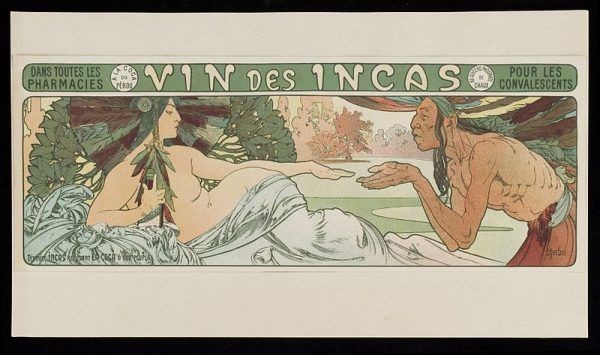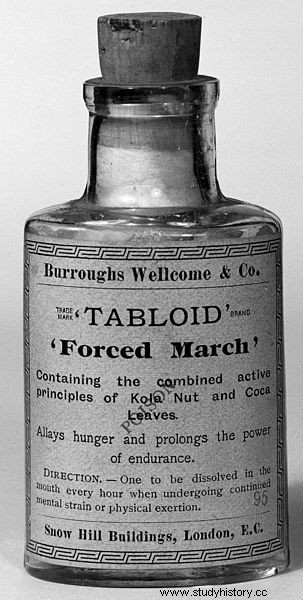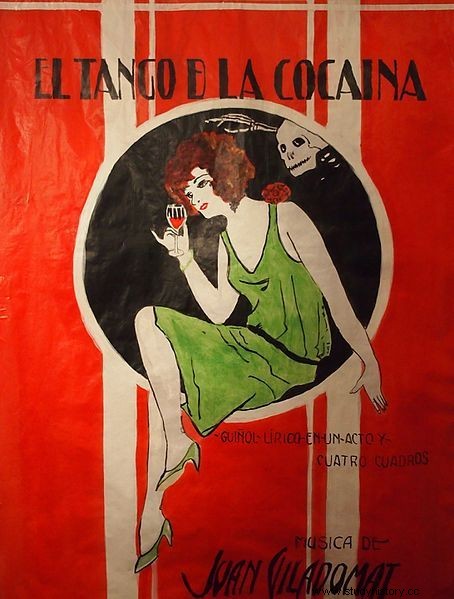Authorities all over the world are struggling with this small bush. The substance isolated from it is one of the most addictive drugs, but the leaves from which it is made do not cause addiction among the indigenous people of South America. Here are 5 interesting facts about coca.
Coca is a naturally occurring plant, which means that it may have been known already in the times of hunter-gatherer cultures that could come across it while searching for food. The domestication, however, took place much later - there is now evidence that it occurred around 800 BC, but scientists estimate it may have happened much earlier.
Legendary Plant
Many legends and myths of South America are associated with coca, including those about the origin of the world. Tukano Indians believe that when the first people came from heaven in a serpent canoe, Father Sun promised them a drink that would connect them with heavenly powers. The first men tried to make this mixture, and at that time the first pregnant woman went to the forest and gave birth to a child radiating with a golden glow. When she returned with him in her arms, she rubbed them with leaves, and the men cut open the child and thus obtained Ayahuasca (pronounced ayalaska) - the "creeper of souls" from which shamans prepare a potent hallucinogenic decoction to this day.
Another version of the myth says that the pregnant Vaí-mahsë writhed so much during childbirth that the old woman who was helping her accidentally broke her finger, which was then stolen by a young man and planted. This place then grew ayahuasca. Vaí-mahsë's daughter had a similar story, but her finger was burned and a coca grew out of the ashes. Yet another legend tells that the first people came with three plants:cassava, coca and caapi .
In Inca mythology we find a similarly brutal story of coca origin. According to her, the wife of the Inca king - Manco Capaca - was killed and dismembered for her infidelity, and coca bushes grew out of the scattered pieces of her body. This plant was supposed to give people leaves that would bring them joy
Undoubtedly, coca played a very important role in everyday life, which has survived to this day in the Indian unit of time and distance - cocada, which corresponds to about 30-40 minutes during which you can cover 4 km in flat terrain or 2 km in mountainous terrain . This is how long it takes to chew one portion of the leaves.

Incas, cocaine, decadence
Why is coca addictive
It has been known for a long time that cocaine produced from coca leaves is one of the most addictive drugs. However, not everyone knows the stories as to why this is so. According to legend, the sorcerer Kjana Chuyma, while serving in the temple on the Island of the Sun, managed to hide the treasure of the god at the bottom of the lake from the approaching conquistadors. Despite being tortured, the wizard did not reveal the treasure's hiding place and was finally abandoned in agony by the invaders. In this state, the sun god appeared to him in a dream, and as a reward for his sacrifice, he decided to give the whole community a remedy for pain and strengthening. The sorcerer, with the last of his strength, went to the village and ordered his companions to climb the nearest mountain and look for a plant with oval leaves, and to care for and cultivate them. He also announced that chewing these leaves will give them strength when the invaders start using them for superhuman hard work. Coca leaves were to give fellow tribesmen joy, the illusion of happiness and destroy pain, as well as discover secrets . If, on the other hand, a white man reached for the list, everything was supposed to be the other way around. For the invaders, coca would become a terrible addiction that would destroy them. We owe this tale to the Bolivian writer Antonio Díaz Villamil.
Drugs Pharaohs?
The hypothesis that leaves from coca bushes growing in Mexico and South America were known in ancient Egypt is quite controversial. We have no evidence of the existence of trade between continents at that time. However, such a hypothesis appeared with the discovery of some plants characteristic of these areas in China and in Europe, and developed in 1976, when the body of Pharaoh Ramses II was transported to Paris for an exhibition at the Museum of Man. During these "visits" it was noticed that the condition of the pharaoh's mummy was very poor and that maintenance had to be carried out, during which the bandage samples were taken. It turned out that they found tobacco - a plant then unknown in Egypt. The whole incident was blamed on inattentive workers who were in the habit of shaking tobacco out of their pockets. This discovery, however, inspired researchers to further analyze the mummy. In 1992, the toxicologist Svetlana Balabanova from the Institute of Forensic Medicine in Ulm analyzed 8 mummies from Egypt and Peru. Among them was the Egyptian mummy Henut Taui, in whose hair and soft tissues cocaine and nicotine were found . Another study was conducted in Manchester on naturally mummified bodies from a Sudanese cemetery. It turned out that nicotine and cocaine were found in 1/3 of 134 bodies. These discoveries raise many new questions for researchers. Did the ancient Egyptians eat coca? Did they use it in the mummification process? Interestingly, this research also suggests that back in those days there may have been some form of transatlantic communication and exchange.

Coca tonic
Salvation with the sonorous name of coca
Bearing in mind the destructive and highly addictive effects of cocaine, it is also worth taking a look at the properties of coca, which for years have been considered beneficial. Chewing the leaves, despite their meager nutritional values, made it possible to forget about hunger and fatigue . This happened, for example, during the siege of La Paz in 1781, when the large supply of this plant in the city did not allow its inhabitants to succumb to the forces of the Indian leader Tupac Katari.
Coca leaves can contain from 14 to 20 ingredients used in medicine. The extracted cocaine is used as an anesthetic and an ingredient in synthetic drugs. It has been known in medicine since 1936 as an aid in the treatment of pneumonia and pulmonary edema . Increases the chance of survival in patients with cholera. The isolation of cocaine by Albert Niemann in 1860 allowed for the development of methods of anesthetizing patients. Cocaine has the properties of point anesthesia.
A breakthrough was also the use of cocaine in ophthalmology in 1875. Carl Koller sprinkled cocaine into the eye of a frog and after a short while, it allowed not only to touch the cornea, but also to interfere with it . Carl then repeated this experiment on the rabbit, the dog, his assistant and himself.
According to modern research, chewing coca leaves also immunizes the body against low temperatures. Due to the constriction of peripheral blood vessels, the body cools down more slowly.

El Tango de la cocaina
A white aphrodisiac
The popularity of cocaine meant that in 1890 it was widely considered an aphrodisiac. It has heart-stimulating properties, increases glucose levels and blood pressure, and deepens breathing. In a sufficiently large (very large) dose, it increases sexual performance and intensifies the sensations associated with it . Similar to alcohol, it also allows you to overcome shyness. A tonic with cocaine was advertised as a drug for impotence . Its effectiveness as an aphrodisiac can also be confirmed by the fact that in the capital of Nazi Germany there was a house of debauchery where, for double the price, it was possible to use the services of girls who used cocaine before. For an additional fee, the client could also receive a dose of this drug to intensify the sensations.
Bibliography:
- Görlitz D., The Occurrence of Cocaine in Egyptian Mummies -New research provides strong evidence for a trans-Atlantic dispersal by humans, PhD Thesis, Open-Access Journal for the Basic Principles of Diffusion
- Theory, Experiment and Application, Dresden 2016.
- Grzybowski A. History of cocaine in medicine and its importance for the discovery of various forms of anesthesia. (The history of cocaine in medicine and its importance to the discovery of the different forms of anesthesia), Klinika Oczna (Polish Ophthalmology Journal) 2007, 109, pp. 101-105.
- Molenda J. History of stimulants. Plants that made people addicted, Warsaw 2016.
- Reichel-Dolmatoff G., San Agustín:A Culture of Colombia; Art and civilization of Indian America, 1972.
- Ryn Z. J., Indian Medicine, Krakow 2007.
